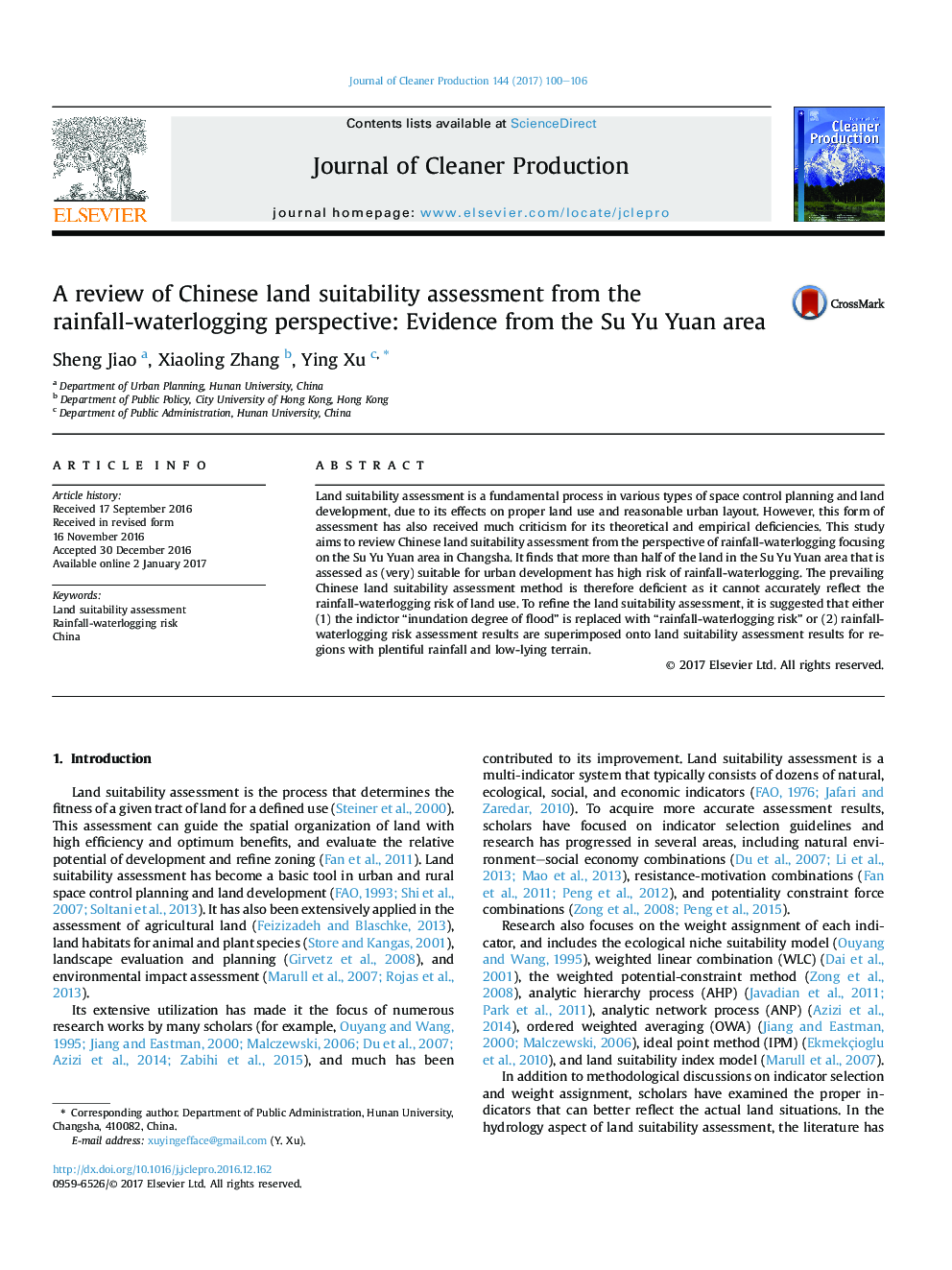| Article ID | Journal | Published Year | Pages | File Type |
|---|---|---|---|---|
| 5480267 | Journal of Cleaner Production | 2017 | 7 Pages |
Abstract
Land suitability assessment is a fundamental process in various types of space control planning and land development, due to its effects on proper land use and reasonable urban layout. However, this form of assessment has also received much criticism for its theoretical and empirical deficiencies. This study aims to review Chinese land suitability assessment from the perspective of rainfall-waterlogging focusing on the Su Yu Yuan area in Changsha. It finds that more than half of the land in the Su Yu Yuan area that is assessed as (very) suitable for urban development has high risk of rainfall-waterlogging. The prevailing Chinese land suitability assessment method is therefore deficient as it cannot accurately reflect the rainfall-waterlogging risk of land use. To refine the land suitability assessment, it is suggested that either (1) the indictor “inundation degree of flood” is replaced with “rainfall-waterlogging risk” or (2) rainfall-waterlogging risk assessment results are superimposed onto land suitability assessment results for regions with plentiful rainfall and low-lying terrain.
Keywords
Related Topics
Physical Sciences and Engineering
Energy
Renewable Energy, Sustainability and the Environment
Authors
Sheng Jiao, Xiaoling Zhang, Ying Xu,
